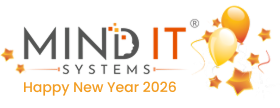
Understanding Rapid Application Development: A Comprehensive Guide
Introduction
“In the digital age, agility is power; rapid application development is the tool that sharpens it.”
In a world of accelerating technological change, businesses must be more agile than ever. Quickly developing, testing, and deploying software is crucial to staying competitive. Rapid Application Development (RAD) has emerged as a methodology that meets these needs and provides a competitive advantage. By focusing on speed, flexibility, and continuous user feedback, RAD enables companies to produce high-quality software in a fraction of the time it would take using traditional development methods, making them more secure and competitive in the market.
This blog explores RAD in-depth, examining its phases, benefits, and applications in modern software projects, including rapid web application development. We’ll also discuss how Rapid Application Development stacks up against other methodologies and why it’s becoming the go-to approach for many organizations.
Index
- Understanding Rapid Application Development
- The Four Phases of Rapid Application Development
- Benefits of Rapid Application Development
- Applying RAD to Web Application Development
- Rapid Application Development Vs. Other Development Methodologies
- Why RAD is Becoming the Go-To Approach for Many Organizations
- Conclusion
Understanding Rapid Application Development
As a methodology, rapid application development (RAD) emphasizes quick prototyping and development of software applications, user feedback, and meticulous planning and testing. The core idea behind RAD is to reduce development time and produce a working model that can be iteratively refined until it meets the users’ needs.
RAD is highly flexible and iterative, unlike the Waterfall model, which follows a linear and sequential approach. It allows developers to build prototypes quickly, gather feedback, and make changes without significant delays or added costs. This flexibility makes RAD particularly well-suited for projects where requirements are expected to evolve or where time-to-market is critical.
The Four Phases of Rapid Application Development
Rapid Application Development is typically structured into four distinct phases, each designed to streamline the development process and facilitate continuous improvement.
Phase 1 – Requirement Planning
The first phase of RAD involves gathering and defining broad project requirements. Unlike traditional development methods, which can be time-consuming and detail-oriented, RAD focuses on quickly understanding the project’s goals, the users’ needs, and the system’s high-level requirements. This phase emphasizes speed and flexibility, allowing for changes and additions as the project progresses.
During this phase, key stakeholders such as developers, users, and business analysts should collaborate closely to better understand the project’s objectives. The aim is to establish a foundation that enables rapid development without stifling innovation with a rigid framework.
Phase 2 – User Design
The user design phase is where RAD truly shines. In this phase, developers create prototypes and models based on the initial requirements. These prototypes are not just theoretical models but functional components that can be tested and used. This strategy enables users to interact with the software early in development and provides feedback that shapes the final product.
The iterative nature of this phase means that prototypes are continually refined based on user input. It assures that the software meets user expectations and helps identify potential issues early in development, reducing the risk of costly rework later.
The user design phase in RAD can address many product design challenges. To discover how to overcome them, read this article: Product Design Challenges—How to Ameliorate.
Phase 3 – Development
The project moves into the development phase once the prototypes have been refined to meet user requirements. This phase is focused on building the actual software using the prototypes as a guide. Because the design phase has already ironed out many details, the development phase can proceed quickly, with developers focused on coding, integrating, and testing the software components.
RAD tools and frameworks often play during this phase, providing developers with the necessary resources to accelerate the coding process. These tools can include code generators, drag-and-drop interfaces, and pre-built modules that reduce the need for manual coding.
Phase 4 – Cutover
The final phase of RAD is cutover, where the software is finalized and deployed. This phase includes final testing, data conversion, user training, and system launch. Because RAD emphasizes speed and user involvement, the cutover phase is typically shorter and more streamlined than traditional development methods.
Any final adjustments or refinements are swiftly made before the software is launched to ensure the end product is functional and closely aligned with user needs and expectations.
Benefits of Rapid Application Development
The RAD methodology provides numerous advantages, making it a compelling choice for modern software development projects.
1. Faster Time-to-Market
RAD’s most significant advantage is its ability to shorten development timelines. RAD allows developers to deliver functional software faster than traditional methods by focusing on rapid prototyping and iterative refinement. This speed is precious in industries where time-to-market is critical to maintaining a competitive edge.
2. Improved User Satisfaction
Rapid Application Development emphasis on user involvement throughout the development process ensures that the final product is more likely to meet user needs. By continuously gathering and incorporating user feedback, RAD decreases the risk of delivering a product that aligns differently with user expectations. This approach leads to higher user satisfaction and better overall product quality.
RAD’s focus on user feedback is also a key benefit of agile methodologies. Learn more about the Five major benefits of Agile Development.
3. Flexibility and Adaptability
In traditional development methods, changes late in the project can be costly and time-consuming. RAD’s flexible approach allows for changes at any stage of the development process, making it easier to adapt to evolving requirements. This adaptability is particularly valuable in dynamic environments where project needs may change rapidly.
4. Cost Efficiency
While Rapid Application Development requires more user involvement and frequent iterations, it can be more cost-effective in the long run. By identifying and addressing issues early in development, rapid application development reduces the likelihood of costly rework and delays. Additionally, the shorter development cycle can lead to lower overall project costs. Cost efficiency in Rapid Application Development is closely tied to having a skilled development team that can effectively manage iterative changes and leverage RAD tools to their fullest potential.
Explore the benefits and importance of getting a dedicated development team for software development projects.
Applying RAD to Web Application Development
The principles of RAD are especially relevant in the context of rapid web application development. In the fast-paced world of web development, where user preferences and technologies evolve quickly, the ability to rapidly develop and deploy new features is essential.
RAD’s iterative approach allows web developers to respond more effectively to changing user needs and market trends. Choosing the right web development technology is crucial for maximizing the benefits of rapid application development.
For insights on selecting the right web development tech stack for your projects, read this informative blog on choosing the Right Web Development tech stack for your project.
Using rapid application development, web developers can create functional prototypes that users can interact with, providing valuable feedback that guides the development process. This approach ensures that web applications are built quickly and designed to meet users’ specific needs.
RAD vs. Other Development Methods: A Comparative Look
Rapid Application Development (RAD) stands out for its speed and flexibility, but it’s essential to understand how it compares with other methodologies:
Waterfall Model: The Waterfall model follows a linear and sequential approach with detailed planning and documentation. It works well for projects with fixed requirements but lacks RAD’s flexibility and can adapt slowly to changes.
Agile: Like RAD, Agile values iterative development and user feedback. However, Agile encompasses a broader range of frameworks, including Scrum and Kanban. RAD specializes in rapid prototyping and is often considered a subset of Agile.
DevOps: DevOps integrates development and operations to enhance the software delivery process. While RAD focuses on swift development, DevOps prioritizes continuous integration and deployment. Both methodologies can work in tandem, particularly for projects that need both speed and reliability.
Why RAD is Becoming the Go-To Approach for Many Organizations?
Rapid Application Development (RAD) is swiftly gaining traction as the preferred methodology for many organizations. The reason? It empowers businesses to keep up in a fast-paced digital world. With its focus on speed, flexibility, and continuous user feedback, RAD allows companies to respond to changing market demands and user needs with agility and precision.
By emphasizing rapid prototyping, RAD delivers functional software faster, reduces time-to-market, and enhances user satisfaction. Its iterative approach means that products evolve based on real user insights, minimizing risks and ensuring alignment with business goals. For organizations looking to innovate and adapt quickly, RAD offers a powerful toolset to accelerate development while maintaining high quality. This blend of speed and responsiveness is why RAD is increasingly the go-to approach for dynamic and competitive industries.
Conclusion
Rapid Application Development is more than just a methodology; it’s a mindset that prioritizes speed, flexibility, and user satisfaction. By embracing RAD, businesses can reduce development times, enhance product quality, and stay ahead of the competition in an increasingly forward-thinking digital landscape.
At Mind IT®, we are committed to delivering high-quality custom software solutions that meet our clients’ needs. Our development practices are designed for agility, allowing us to adapt to feedback and evolving needs quickly. Whether launching a new application or upgrading an existing one, our approach ensures that your projects are completed on time, scalable, and flexible to meet market demands. By leveraging efficient development cycles and continuous improvement, we help our clients maintain a competitive edge and drive their business forward.
Share this post
About the Author

Sujoy Roy
(Head – Digital Marketing)
From my teenage time, I had a quench to solve problems and loved leadership. Starting my career in relation management, ignited my passion for managing people. While managing I realized technology needs to be incorporated to keep pace with the changing world & do my work efficiently.

